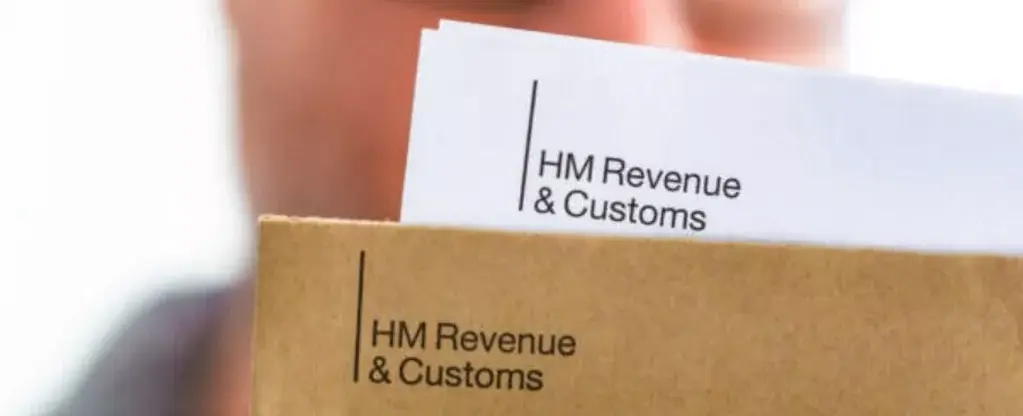

HMRC pension savers lump sum — how it works, recent changes, limits & FAQs
Quick summary on HMRC Pension Savers Lump Sum (TL;DR)
- Most people can take up to 25% of a private or workplace pension as a tax-free lump sum (the Pension Commencement Lump Sum / PCLS).
- Since 6 April 2024 the old Lifetime Allowance (LTA) regime was abolished; it was replaced with new rules (the Lump Sum Allowance (LSA) and related death-benefit rules). This changed how larger lump sums are treated.
- The standard Lump Sum Allowance (LSA) for tax-free payments is £268,275 (effectively 25% of the old standard LTA). Certain protected members may have larger allowances.
- Money taken above relevant allowances or not covered by protections can be taxable — and HMRC has recently signalled closer scrutiny of returned or re-deposited tax-free lump sums. Stay careful with “cancellations” or “recycling.”
1. What is a pension lump sum (PCLS) and why it matters
A Pension Commencement Lump Sum (PCLS) — commonly called a “tax-free lump sum” — is a one-off payment you can usually take from a defined contribution pension once you access your pension benefits (called “crystallising” the fund). In most circumstances 25% of the fund value can be taken free of income tax. The remaining 75% may be left invested, used to buy an annuity, transferred to drawdown or taken as taxable income.
Why it matters: a tax-free lump sum can provide flexibility — paying off debt, funding a deposit, or cash buffering in retirement. But taking cash early or without considering allowances and future needs can reduce long-term retirement income and have tax consequences if rules change or protections are lost.
2. The legal backdrop - Lifetime Allowance (LTA) changes and the Lump Sum Allowance (LSA)
Historically the Lifetime Allowance (LTA) capped the total value of pension benefits that could be taken free of extra tax. The UK government removed the LTA—the LTA regime was abolished with effect from 6 April 2024—and introduced new rules focused on lump-sum and death benefits (including the Lump Sum Allowance (LSA) and the Lump Sum and Death Benefit Allowance (LSDBA)).
Key practical HMRC Pension Savers Lump Sum effects:
- The standard LSA is widely described as £268,275 (this is 25% of the old £1,073,100 LTA). That generally caps tax-free lump sums across arrangements for people without protection.
- Individuals who had transitional protections or other historical protections may retain larger protected lump-sum entitlements — these remain relevant and complex.
Because this was a structural change, many pension schemes, advisers and HMRC issued guidance and newsletters so trustees and members can apply it correctly — and savers should check scheme communications and HMRC guidance before acting.
3. How much can you take tax-free today?
Standard position: You can usually take 25% of the value of each pension as a tax-free lump sum, up to the LSA of £268,275 in total across all arrangements (unless you have a protected higher allowance).
Protected allowances: If you previously applied for and were granted LTA protections (e.g., primary protection, fixed protection, individual protection), you may have higher tax-free entitlements. These protections are scheme- and person-specific and need careful review with your pension provider or adviser.
Serious ill-health or death before 75: Different lump-sum allowances (the Lump Sum and Death Benefit Allowance) can apply where death or serious ill-health payments are concerned — those can be higher in some circumstances.
Important: The 25% rule is typical for defined contribution schemes. Some defined benefit (final-salary) schemes use different calculation methods to produce a cash equivalent and the lump sum permitted can be scheme-specific.
4. When can you take a lump sum? (Minimum age & crystallisation)
Minimum age for private pensions: Typically you can access your pension from age 55, rising to 57 in 2028 (subject to legislation). That’s when you can crystallise a fund and take a PCLS.
Crystallisation: To be eligible for the tax-free PCLS, you must crystallise the pension (move it into drawdown, buy an annuity, or take a full/partial withdrawal). How this is done and recorded influences tax treatment and record-keeping, so follow scheme procedures carefully.
5. Tax on the remainder (the 75% and other taxable parts)
The portion of the pension not taken as the tax-free lump sum is normally subject to income tax when you withdraw it. How it’s taxed depends on how you take it:
- Income drawdown: money taken as income is subject to PAYE and income tax at your marginal rate.
- Uncrystallised funds: if you take an “uncrystallised funds lump sum” (UFPLS) the non-tax-free portion is treated as taxable income.
- Annuity: payments from an annuity are taxed as income.
There are special cases (e.g., if you die before 75, or take serious ill-health lump sums) where tax treatment differs; always check scheme rules and HMRC guidance.
6. What changed in April 2024 — practical implications for savers
The key legislative shift was abolition of the Lifetime Allowance (LTA) and introduction of RBCEs (relevant benefit crystallisation events) and the Lump Sum Allowance mechanics. Practically:
- No LTA excess charge as previously applied — but the LSA now caps tax-free cash in many cases.
- Record-keeping matters more: HMRC and schemes need clear records of when and how lump sums were paid, to determine historic entitlements (especially where people took tax-free cash before April 2024). HMRC guidance and scheme newsletters explain transitional rules.
- People who already had protections may retain superior tax-free entitlements — this is highly individual and often requires checking historic certificates and scheme records.
Because the change was significant, many advisers expect more enquiries and some short-term behavioural effects (e.g., increased crystallisations or early withdrawals) while savers react to policy uncertainty.
7. HMRC scrutiny: returned lump sums, cancellation rights and “recycling” risks
Recently HMRC and the FCA have published guidance and alerts about the tax treatment of returned tax-free lump sums, cancellation rights, and the risk of recycling tax-free cash back into pensions to obtain extra tax relief. These are important to understand:
Cancellation and returns: where a tax-free lump sum is returned to a pension scheme (for instance under a cooling-off or cancellation right), HMRC and the FCA have produced guidance about the tax treatment. Schemes must apply the correct tax coding and HMRC can take a different view in some cases.
Recycling risk: HMRC warns against using tax-free lump sums only to immediately return them as pension contributions to secure extra tax relief (i.e., “recycling”). This can trigger tax charges and other penalties. Don’t attempt to game the system.
If you’re thinking of returning a lump sum or reversing a decision, speak to your scheme and get regulated financial advice — mishandling can be costly.
8. Death benefits and how lump sums behave on death
Pension death benefits are complex and depend on your age at death, the scheme type and whether the funds were crystallised:
- Died before age 75: usually tax-free lump sum death benefits can be paid to beneficiaries (subject to LSDBA rules). In many cases, death benefits paid before 75 are tax free.
- Died after age 75: death benefits are typically taxable as the beneficiary’s income (or subject to a 45% lump sum charge in some historic LTA contexts), but the post-2024 rules altered how some of these calculations are applied — read scheme literature.
If you want to plan for death benefits (nominating beneficiaries, choosing beneficiary protections, reviewing scheme death-benefit rules), check your scheme’s death-benefit policy and consider a financial planner.
9. Practical step-by-step: how to take a tax-free lump sum (what to do)
Check your pension statements and scheme rules. Confirm your current pot sizes and whether any protections apply. Providers must tell you of any protected lump sum entitlements.
Decide whether to crystallise full pot or take partial: crystallising locks in the position for that arrangement. Consider whether you need the cash and how long remaining funds must last.
Ask the scheme for a PCLS calculation and paperwork. Schemes are required to provide details of amounts, tax coding and any certificate they need to issue.
Get regulated financial advice if in doubt. Especially where large sums, protections, or cross-border tax issues are involved.
Keep records. Save scheme letters, crystallisation confirmations, dates and amounts — these matter if HMRC queries historical entitlements.
10. Planning tips & common mistakes to avoid on HMRC Savers Lump Sum
Smart planning tips
- Compare the life-time impact: taking a large lump sum now can reduce future income or growth — do numbers. Consider using an Excel cashflow model or ask a financial planner.
- Use the tax-free cash for long-term benefit (e.g., clearing high-interest debt, home deposit) rather than short-term splurges.
- If you have protections, get them verified and keep the paperwork safe — some savers were surprised when schemes or HMRC needed evidence.
Common mistakes
- Rushing: reacting to headlines or budget rumours without checking facts can cause regret. Policy changes are sometimes proposed, debated and delayed; follow official HMRC guidance before acting.
- Recycling tax-free cash: do not immediately attempt to re-contribute tax-free cash into a pension to get tax relief — HMRC calls this “recycling” and it can be penalised.
- Poor record-keeping: failing to keep crystallisation or protection records can cause HMRC to estimate allowances incorrectly.
11. Cross-border savers and non-UK residents — special considerations
If you live abroad or have tax residence outside the UK, the UK tax-free status may not be mirrored by your country of residence. For example, some countries tax UK pension lump sums on receipt or under local rules. Always check double taxation agreements (DTAs) and seek international tax advice if you are an expatriate.
12. Recent developments, press coverage and what to watch
News outlets and financial press have reported increased withdrawals and speculation around future budget changes affecting pension tax-free cash. Headlines have suggested potential caps, which may drive temporary behaviour (people crystallising small amounts to “lock in” benefits). However, policy changes are made by Parliament and the authoritative source is HMRC / gov.uk guidance. Always verify with official publications.
Watch for:
- Official HMRC newsletters and guidance updates (they publish scheme newsletters addressing implementation).
- Budget announcements (the Chancellor’s statements) — any change to allowances or rates must be legislated.
- FCA alerts on cancellation rights and how schemes handle returned lump sums.
13. Example scenarios (worked examples)
Example 1 — a simple DC pot Joan has a defined contribution pot worth £200,000 and no protections. She can usually take 25% = £50,000 tax-free (subject to the LSA cap, which she has not exceeded). The remaining £150,000 will be taxable when withdrawn (as income)
Example 2 — large pots and protection Ahmed has long service and previously gained individual protection that preserved a higher lump-sum entitlement. His scheme documentation shows a protected LSA above £268,275. He must provide certificates to his pension scheme when taking benefits to ensure the larger tax-free amount is applied. If he lacks the paperwork, disputes can occur.
Example 3 — returning a lump sum Maria took a tax-free lump sum but due to cooling off she tries to return it to the scheme. HMRC and the FCA have guidance on how tax coding and reporting should work; schemes must follow the procedure — but the tax consequences can be non-trivial and schemes may treat returned sums differently depending on timing. Get written confirmation.
14. Checklist before you take any lump sum
- Check your scheme rules and trustee communications.
- Verify current allowances (LSA) and any protected amounts.
- Request formal PCLS calculation and crystallisation paperwork from the provider.
- Discuss tax and cashflow consequences with a regulated adviser (or use MoneyHelper guidance).
- Keep all original documents and proof of transactions in case HMRC queries later.
15. Where to find authoritative guidance (official resources)
- gov.uk — “Tax on your private pension — Lump sum allowance” and official pension newsletters: primary HMRC guidance on lump sums and the effects of LTA abolition.
- MoneyHelper — clear explainer material for consumers on tax-free cash and lump sum allowances.
- Financial Conduct Authority (FCA) — on cancellation rights and interactions with tax rules where relevant.
- Reputable financial press (FT, MoneyWeek, Telegraph) for context and market reaction — but always confirm with gov.uk/HMRC for legal detail.
16. Practical templates you can use (sample wording)
Sample email to a pension provider requesting a PCLS calculation
Dear [Provider name],
Please provide a formal calculation of the Pension Commencement Lump Sum available to me from my [scheme name] pension, including any protected Lump Sum Allowance or transitional protections recorded on my file. I also request the crystallisation paperwork and confirmation of tax coding that will apply if I choose to take the tax-free lump sum. My member reference: [xxxx].
Thank you, [Your name]
Use this to get clear documentation you can store.
17. Q&A — common questions (with short, clear answers)
Q1: How much of my pension can I take tax-free?
A: Usually 25% of each pension is tax-free, up to the Lump Sum Allowance (standard is £268,275 unless you have protections). Check your scheme and any protections.
Q2: Is the 25% tax-free cash being removed?
A: As of the latest official guidance, no blanket removal of the 25% rule has been legislated — but there has been press speculation and evolving policy around cap levels. Always verify with HMRC/gov.uk.
Q3: I already took tax-free cash — will HMRC take it back?
A: HMRC won’t “take back” tax-free cash casually, but if the amounts are later returned, recycled or were incorrectly applied, there can be tax consequences or adjustments. Keep records and talk to your scheme and adviser.
Q4: I live abroad — is the lump sum tax-free for me?
A: UK tax-free status may not be mirrored by your country of residence. You may face tax at source or locally. Check double taxation treaties and get cross-border tax advice.
Q5: Can I take 25% tax-free from multiple pensions?
A: Yes, you can normally take 25% from each arrangement, but the total tax-free cash across all arrangements is subject to the Lump Sum Allowance and any protections.
Q6: What records should I keep?
A: Keep crystallisation dates, scheme notifications, PCLS calculations, letters on protected allowances, and any HMRC certificates. These are crucial if HMRC queries historic entitlements.
Q7: What’s the risk of “recycling” the lump sum?
A: HMRC treats recycling (taking tax-free cash and putting it back as a pension contribution to gain relief) as abusive. It can attract tax charges and penalties. Avoid it.
Q8: Where can I get help if I’m unsure?
A: Use gov.uk for official rules, MoneyHelper for consumer guidance, and consult a regulated financial adviser or tax specialist for complex cases or cross-border issues.
18. Final checklist before you act on HMRC Savers Lump Sum
- Confirm your eligibility and allowance with your pension provider.
- Verify any protected entitlements (and get certificates).
- Consider long-term income needs — run the numbers.
- Avoid recycling; don’t return and recontribute without professional advice.
- Keep all paperwork and HMRC correspondence for at least several years.
19. Closing thoughts
The pension tax-free lump sum remains a valuable and flexible feature of UK private pensions, but the framework has changed since the abolition of the Lifetime Allowance in April 2024. That makes due diligence, record-keeping and often regulated advice more important than ever — particularly for savers with larger pots or historical protections.
If you’re considering taking a lump sum today, start at your pension provider, get a formal PCLS calculation, and ask for written confirmation of the tax treatment. Use independent guidance (MoneyHelper and gov.uk) and consider a regulated financial adviser for sums that will materially affect your retirement.
Tags
Share
Related Posts



Quick Links


![Open Banking in Canada [The Complete Guide to Consumer-Directed Banking (Long-form SEO Article)]](/static/076c593ae336daedf2fc4d2d4390245d/144fe/im.jpg)
![Tanzania Tea Packers Limited (TATEPA) Public Announcement – November 2025 [A Comprehensive Investor and Industry Analysis]](/static/1118ed6b655f885f894069eb2ae25ee6/144fe/im.jpg)
![オープンハウス(Open House)[概念、文化的背景、そして日本不動産市場における重要性]](/static/f2541650dd2463cf888a22038777afa7/144fe/im.jpg)